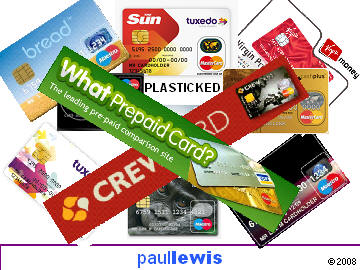
This talk was given 25 June 2008
The text here may not be identical to the spoken text
Community Development Finance Association
Money for a Change conference 25 June 2008
Hello. I’m honoured to be here. Your Chief Executive Bernie Morgan asked me to do this after she heard a talk I gave last year and, as she put it, ‘listened with glee’ to what I said. Trouble is, then I was talking to the traditional financial services industry. And telling them where they were going wrong. So knowing quite what to say to you lot was a bit of a problem.
Some of you may know me from Money Box on Radio 4 and my appearances on BBC Breakfast and BBC News.
But I am here today as me not Money Box and God forbid not the BBC. I am here as a freelance financial journalist – I do lots of other things apart from the BBC. Some are in the biography you had circulated. And you can read about all of them on my website .
If any country in the world needed a strong community finance sector it is the UK. We have the most innovative financial services sector certainly in Europe. It is imaginative, it’s highly profitable, it employs hundreds of thousands of people. But it has its dark side. Let me tell you a tale. A Tale of Two Duplicities.
UKLI and PPI
What do you call a company which sells small plots of agricultural land to
investors for up to 30 times their true value on the hope – never realised –
that one day they might get planning permission for housing?
UK Land Investments Limited ran one of these so-called landbanking schemes for five years. It took £69 million from nearly 5000 people in exchange for bits of fields it sold for £15,000 each.
Three weeks ago the scheme was declared illegal by the Financial Services Authority which went to court to put UKLI put into administration. The company had little money left after paying commission to 80 sales staff lending nearly £10 million to companies here and overseas which the administrator Deloitte says were controlled by the man who ran UKLI. Deloitte says investors will get back as little as 2.5p pence in the pound. Or they can choose to keep their corner of a British field that is forever grassland. Either way they have lost almost all their money.
But the day after the FSA declared UKLI an illegal collective investment scheme and the administrators began to try to recover the £69 million lost another bit of the financial services industry was accused of overcharging customers not by £69 million over five years but by £1.4 billion every year. And it wasn’t a here-today-gone-tomorrow company in the frame. But the High Street banks we all know so well.
Payment Protection Insurance (PPI) is sold alongside loans. It claims to protect the borrower by meeting some of the cost of repayments if they can’t work because of redundancy, illness or accident.
But like a lot of insurance PPI gives people peace of mind only until they make a claim. Because PPI often does not pay out. The Finance and Leasing Association, which represents many lenders, admits that more than one in five claims is rejected. Or, as its boss Stephen Sklaroff put it to me the other day, nearly 80% of claims are met. But when more than one out of every five customers who claim is left without the cover they thought they had you have to wonder how this product is sold.
The Financial Services Authority wondered and its research found that many of the companies selling PPI mislead their customers. Some make it appear compulsory to take the insurance – it isn’t. Others do not check on existing medical conditions – they can scupper a claim. A big proportion fails to explain the restrictions – if you're a contractor or self-employed it won’t pay out if you lose work. A smaller group sells it to people already excluded because they are over pension age or not in work.
Citizen’s Advice says one in three PPI policies is mis-sold. No wonder the consumer organisation Which? calls it a protection racket.
Not only is it a product that is frequently mis-sold and often fails to pay out the Competition Commission estimates that customers of this widely mis-sold product are also overcharged. It is considering banning the sale of PPI alongside loans or putting a cap on the price that is charged. But not for a while. Meanwhile we will carry on being overcharged by £1.4 billon a year.
Compared with that perhaps the best term for landbankers UKLI is simply ‘beginners’.
The cost of PPI
Let’s stick with PPI for a moment because it illustrates very well one of
the marketing strategies of the financial services industry – being true but
misleading. The lenders do this by using a handy loophole which means they do
not have to include the cost of PPI in the APR – the interest rate – as long as
taking PPI is not a condition of getting the loan.
There is fierce competition on personal loans and that has brought down interest rates. Nowadays, of course, competition means getting into the best buy tables provided by the comparison websites such as MoneyFacts and moneysupermarket.com. And the competition is all about keeping down the one simple number that the tables can be sorted on – the APR. So to get to the top of the tables lenders cut the APR. That cuts their profit so they have to find another way to make money. Payment Protection Insurance is one of those ways.
Take a loan of £5000 over three years. I do that because it is the typical unsecured loan in the MoneyFacts tables with the information we need. There are 44 products for which we have data. The average APR is 10.5%. But if you add the cost of PPI to the cost of the loan the average APR would be more than doubled to 21.9%. On this £5000 loan over three years the average cost of the interest you pay is £834.76. The average you pay for the PPI is £907.24. So PPI more than doubles the cost of the loan – it is 1.14 times.
And the tables show us that some lenders push themselves up the best buy tables by reducing the APR but making their profits on the PPI.
AA online for example is 3rd in the best buy tables for its 7.6% APR. But if you take the PPI into the APR it shoots up to 22.3% and AA online doesn’t even make the top twenty – it tumbles to 26th out of 44.
Moneyback Bank is 4th on APR – but falls to 22nd when PPI is added on. And Alliance & Leicester moves from 5th place down to 23rd. We can only conclude that these companies are shifting the balance between PPI and the interest rate to give them an artificially high place in the best buy tables. They would point out that PPI is optional.
|
Unsecured loan of £5000 over 3 years00 |
||||||
|
|
APR |
Interest |
PPI |
PPI/Int |
APR inc PPI |
APR rank excl/incl PPI of 44 |
|
Average |
10.5% |
£834.76 |
£907.24 |
1.14 |
21.9% |
21.5th |
|
AA online |
7.6% |
£587.56 |
£1344.96 |
2.29 |
22.3% |
3rd / 26th |
|
Moneyback Bank |
7.8% |
£605.20 |
£982.80 |
1.62 |
20.5% |
4th / 22nd |
|
Alliance & Leicester |
7.9% |
£612.76 |
£986.04 |
1.61 |
20.6% |
5th / 23rd |
Note: Loans with lower APRs may sometimes have higher repayment costs due to differing methods of calculating APRs
Source: MoneyFacts June 2008 pp60-61 and Paul Lewis calculations
In this table of 44 loans, the most expensive PPI is £36.07. The average is £25.20 a month and the best is £14.78 a month. But even that is way above the market rate for this insurance. From this week you can look for best buy standalone PPI policies in tables on the website of the Financial Services Authority – though it doesn’t do loans. And if we take that average loan from MoneyFacts – £162.08 a month which we want to insure against being unable to pay because of unemployment, sickness, and accident for three years – and put it into the FSA tables, we get this extraordinary result.
|
PPI comparison costs |
|||
|
|
Per month |
Total over loan period |
Overcharge |
|
Maximum from table |
£36.07 |
£1298.52 |
£1163.88 |
|
Average from table |
£25.20 |
£907.20 |
£772.58 |
|
Minimum from table |
£14.78 |
£532.08 |
£397.44 |
|
Cheapest comparable (iprotect) |
£3.74 |
£134.64 |
£0.00 |
Note: Loans with lower APRs may sometimes have higher repayment costs due to differing methods of calculating APRs
Source: MoneyFacts June 2008 pp60-61 and Paul Lewis calculations
The cheapest standalone PPI will cost you not £25.20 which is the average here, not £14.78, which is the cheapest. But for a comparable product it is £3.74 a month with an insurer called iprotect. So the lowest PPI sold with a loan overcharges by nearly £400, the average by more than £770 and the most expensive by more than £1100.
No wonder it’s a big business. The OFT estimated in 2006 that there were 20 million PPI policies in force. And around 7 million being sold each year.
Small loans
Many of these PPI policies are sold to low income people as almost
unavoidable add-ons to a loan that they probably find hard to afford anyway. And
of course many low income poor credit people do not want to borrow £5000 over
three years. Their need is for £500 over six months or even £100 over three
months. But such loans are not to be had in the traditional financial services
world.
The smallest loan you can get from traditional lenders is £500. I found just one provider. The Birmingham based Secure Trust Bank which lends £500 over one or two years at 19.5% APR. Not much competitive pressure there.
And as for short-term loans then six months is the shortest time and again just one provider in the market Egg at 16.9% but you have to borrow at least £1000.
If you do want £1000 over 12 months then the choice widens. I found 40 products ranging from 7.9% with Abbey or Black Horse up to 30% with Ocean Money and 37.9% with Bank of Ireland.
Now before we get too excited about these fairly small and fairly short-term loans at 7.9% two points to remember. First Black Horse – which is part of Lloyds TSB – offers point of sale loans so they are bound to be lower in value than a personal loan you go to the bank for. And second these loans quoted are all what they call ‘typical’ rates. The law says that
A ‘typical’ rate has to be offered to two out of three of those applying – though policing that is difficult. And many lenders offer more than one typical rate depending on outlet or circumstances. And the remaining third can be offered any rate – often much higher. Black Horse for example also offers the same loan at 27.9%. Those who do not get 7.9% may well revert to 27.9%.
And if you look at best buy tables some banks still use what they call ‘personal pricing’. That means that no rates are quoted and everyone is given their own APR depending on their circumstances. This is slightly less common than it was. But Abbey, Clydesdale Bank, and HSBC still only offer personal pricing on loans. And Bank of Scotland, Halifax, Sainsbury’s Bank, and Yorkshire Bank only offer it on loans arranged over the phone. So from the tables we have no idea what they charge or what their PPI costs are.
This of course leaves the way open to the other sort of lending. And I’m not talking loan sharks or illegal activity here, I’m talking the doorstep – or what we might fashionably call sub-prime – lenders.
Britain’s biggest, Provident, used to be renowned for its 177% APR. Not any more. The credit crunch has affected even the doorstep lenders.
Provident now lends, for example, £300 with 56 easy weekly repayments of £9. Total repaid is £504. In other words of those 56 payments 33 are repaying the loan and 22 are paying the interest. The APR is now 183.2%. If you want a loan over a shorter period you can borrow over 31 weeks. The same £300 will be repaid at £15 a week. Total cost £465. Again, 20 payments clear the bill, 11 payments are the interest. APR is 365.1%.
Even worse are the so-called payday loans. Payday Bank for example lends you £400 for a month and you repay £500 on payday. APR is 1355%.
In some countries in Europe and some US states such interest rates would be illegal. In Germany the interest rates charged on some UK credit cards would be illegal! But not in the UK.
Unbanked
Many of those attracted these sub-prime lenders are people who cannot borrow
from the bank or get a credit card at any price. They are sometimes called the
unbanked.

![]()
The latest Government figures for 2005/06 show that the number of completely unbanked people – those without a bank account of any sort – was 2 million adults in 1.3 million households. That was down on previous figures – a fall of 28% or 800,000 adults who had gained access to a bank account and 35% of households. That reduction was due partly to Government pressure on banks to introduce basic bank accounts. They are now provided by 17 providers – 14 banks and 3 building societies. All allow direct debits and all provide a cash card to withdraw money from an ATM. But only 6 provide a debit card to pay from the account by plastic in shops and online. One offers a cheque book though none offers a cheque guarantee card, an overdraft, or a credit card.
The government recognises that access to bank accounts is just stage one of financial exclusion. Its latest report published in December 2007 added access to cheap credit, access to savings accounts, access to insurance – I don’t know how the industry sneaked that one in! Let’s help people who can’t afford to have a bank account and struggle to pay for food, rent and clothes – I know we’ll sell them insurance, preferably against things they are unlikely to suffer from and when they do we won’t always pay up. Mmmm.
So what does the alternative finance system – and I mean of course CDFA, CDFIs, credit unions and so on – what does it do to fill this financial exclusion gap?
Well, I know that you make loans. Credit unions have done that for a long time and their rate of interest now capped at 2% a month – 26.8% APR – is much lower than the doorstep lenders and lower for their clients than the available loans from banks or credit cards. And many credit unions offer loans at much less – Leeds City Credit Union for example charges 12.68% APR or 9.38% APR for bigger loans. You can borrow as little as £100 if you want and you can set how quickly you will pay it back.
So you can compare the loan with Provident. Remember we borrowed £300 with weekly repayments of £9. That takes 56 weeks. And 22 of those £9 payments are interest. Total cost of interest is £204.
With Leeds City the same £300 loan, the same £9 weekly repayment takes just 35 weeks to pay off. Fewer than two of £9 payments pay the interest. Total interest £13.23.
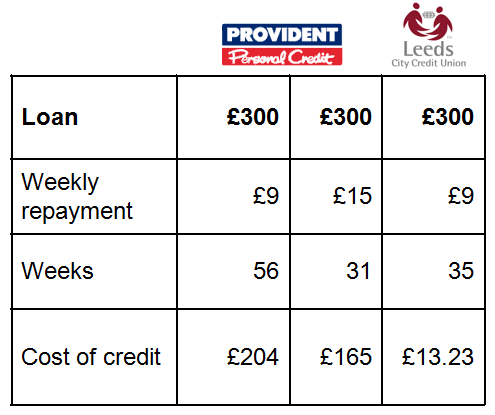
![]()
And remember Provident also offer the loan over a similar time to that – 31 weeks. But it charges £15 not £9. That loan would take 21 weeks to repay with Leeds.
That is real competition with doorstep lenders
And I know that some Community Development Finance Initiatives do personal finance, making small loans, an average of £635, over a short period. As far as it goes, of course, that is exactly what people need. They are the very loans the banks can’t or won’t make. But I think you have to go further. You have to fill another gap and one the Government’s recent plan completely overlooked.
Five grams of PVC
This little piece of plastic, 5g of PVC, can unlock any door, buy any
service, purchase any item. It is the key to all our financial needs. That’s why
in the developed world there are now more plastic cards than there people. If
you don’t have one you are excluded. Not least of course from the internet. And
that means exclusion from many of the best deals on goods and services you might
need to purchase.
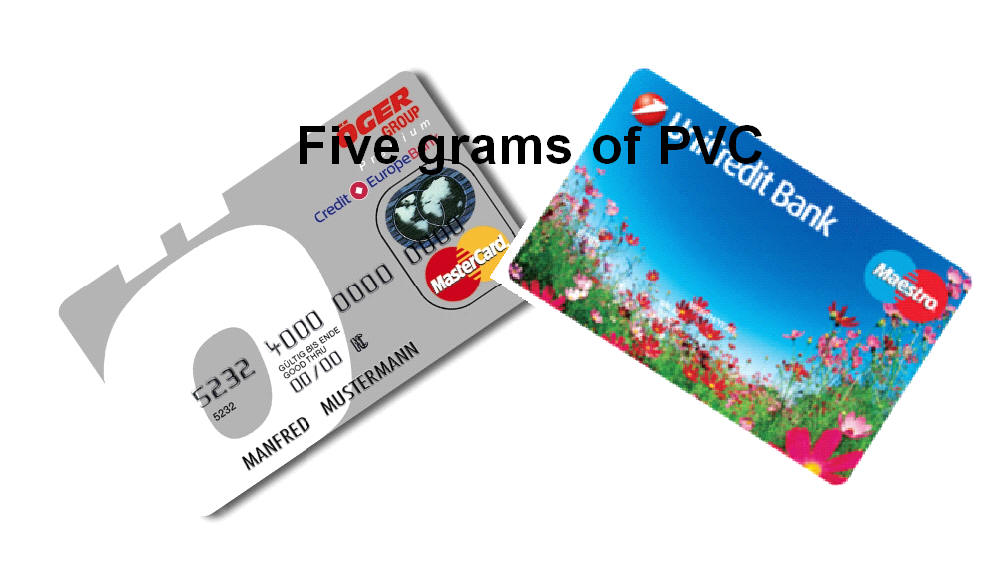
So financial exclusion is not just being unbanked – a problem that is recognised and to some extent is being solved. It is also being outside the world of plastic finance. The low income, poor credit people who are
unplasticked
This is a space community finance has not tried to enter. And you will have to be quick. Because the card industry is working hard to fill this gap.
Prepared for Prepaid
We already have two kinds of plastic – credit cards and debit cards. And
many people don’t understand the difference between them. That’s certainly my
experience writing and talking about finance in the UK. In the US the National
Consumers League found that three out of four people were unclear about the
difference between a credit and a debit card.
I don’t have to tell you – but I’m going to just in case anyone here is three out of four Americans and hasn’t really thought about it – that a credit card buys the item now but the user pays in the future. With a debit card you buy the item now but the user also pays now. The money is debited from your account that day. Or you might say a credit card is a pay sometime card. A debt card is a pay today card.
|
CREDIT CARD |
PAY IN FUTURE |
PAY SOMETIME |
|
|
DEBIT CARD |
PAY IN PRESENT |
PAY TODAY |
And we can see that there is a gap in this table. To complete the matrix you need a card that you pay not in the future, not in the present – but in the past. That is the new card – the pre-paid card.
A card you load with money in advance – cash or from a bank account – and then when you use the card you are just spending down that money.
|
CREDIT CARD |
PAY IN FUTURE |
PAY SOMETIME |
|
|
DEBIT CARD |
PAY IN PRESENT |
PAY TODAY |
|
|
PRE-PAID CARD |
PAY IN PAST |
ALREADY PAID! |
And it is this prepaid card that is being marketed to people who either can’t get a credit card or even a debit card. Or who don’t want the risk of debt creeping up on them.
But the problem the card companies have is this. How to make money from them?
With credit cards the people who run up a debt pay interest. The people who pay late or miss payments or exceed their credit limit pay a penalty – fixed now at £12. And of course there’s insurance against not being able to meet the payments. Largely useless of course but an income stream for the banks.
And for those that don’t run up a debt there are the merchant fees paid by the retailer. Based not on what it costs to process a payment but on a percentage of the price paid. It’s a bank tax on the cost of buying goods using your card. All in all a very profitable business.
Debit cards – the second use of plastic – are not quite so profitable. There’s no debt so no interest. There are merchant fees but smaller and usually a fixed amount not a percentage. Fees are possible because not every transaction is checked so it is possible to go overdrawn. And if that overdraft is unauthorised – or as the banks like to call it now an informal request for an overdraft – the charges can still be up to £35 a time, pending the current court case.
|
CREDIT CARD |
PAY IN FUTURE |
PAY SOMETIME |
Interest 16.4% Fees £12 Merchant 2.5% |
|
DEBIT CARD |
PAY IN PRESENT |
PAY TODAY |
Free if in credit Overdrafts £30 Merchant 90p |
|
PRE-PAID CARD |
PAY IN PAST |
ALREADY PAID! |
???? |
So what about prepaid cards? There’s no credit, no debt so no income there. And because prepaid prevents debt and errors there are no penalty fees – so that profit stream is dry. Now with a prepaid card the bank actually holds the customer’s money. So really it should be paying interest on it. They don’t so it keeps that. There are also charges to the retailer.
So what’s left? Fees. And what fees. Every stage of using the card can bring a charge. Not enough room in the box so here is a page…
Fees for having the card
Fees for putting money on the card
Fees for taking money off the card
Fees for not using the card
Other fees
That’s 32 fees and if I had another slide I could get up to 40. Who said bankers have no imagination?
And that’s before we take account of loss of interest on the money, high costs for calls to the helpline, and of course those merchant fees – not paid by the customer of course but reflected in higher prices which ultimately the consumer pays.
This is all straight from what I call the taking-money-off-customers-without-them-noticing department. It really has been working overtime hasn’t it?
Recently I tried to analyse the cost of pre-paid cards. What would it cost to use one? This mind-boggling array of charges defeated me at first.
So I tried one card at random. The News of the World Pay Monthly card. Here’s the story.
Maria is Patrick’s aunt. And when he got great exam results she set up a prepaid account and put in £100 using her debit card. Fee £1.95. Balance on card £98.05. Then there’s the application fee of £6.49. Balance £91.56. Then £5 of that is credited back. Balance £96.56. Her nephew Patrick keeps the card for three months. So he pays three monthly fees of £4.99 which is £14.97. Patrick thinks it is a glorified cash card. So he uses it at the ATM. Five times. Paying 50p in fees each time and he only takes out a tenner. Now he’s down to £29.09. Maria takes Patrick to Ireland to see a relative and he draws out €20 there paying £2.25 for the privilege. Those €20 cost him £16. Which leaves him with £10.84 on his card. He checks up on his balance when he gets back. Thinks ‘this is a rip off. Maria paid in £100 and I’ve had £66 and it’s nearly empty’ I don’t want to use it any more and cancels it. There is a £10 fee for that and his aunt is credited with the 84p.
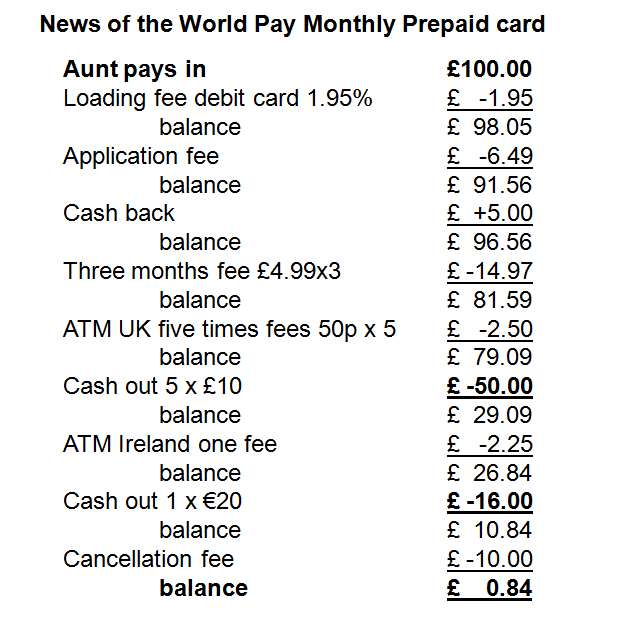
![]()
So out of the original £100 his aunt paid Patrick has had £66 and the card provider has had more than £33. Maria gets back 84p. Now, I am sure that Patrick and his aunt used the card in exactly the wrong way. And if they had used it more as it was meant to be used Patrick would have got more out of it. Despite those charges there are always free ways to load money, free ways to use it. If you know them and if you use them.
To me this is a good example of what I call complexification. Making financial services so complex that the human brain cannot make rational choices, ends up making bad ones, but usually doesn’t even understand what it has done wrong. And if it does work it out and complain it is referred to paragraph 94(a)(i) blobby point five which, somehow when they needed that tenner late at night, they ignored.
The comparison site moneysupermarket.com looked at its own typical user. They load £310 in one go by the cheapest means for that card – often zero. Then spend that £310 over a month in 5 purchases of £50 each in the UK and two ATM visits of £30 each also in the UK.
The 28 cards on its database – 16 of which are run by Newcastle Building Society. Inevitably the cards produced by Newcastle’s ‘Card Solutions department’ – solution to what I’m not quite sure. The cheapest monthly cost was Club 18-30 at £3.75 a month. And the most expensive was JustCash at £16.91 a month. To run an account that has £310 in it for a year would cost you at best £45 and at worst £202.92.
And if that is your pattern of use that works out roughly – and I think it’s a negative AER rather than an APR – but just taking it at its simplest it’s -15% gross interest per year up to -65% gross interest of the balance a year.
In other words very expensive.
There are also ways of using the card that would be cheaper than this. But on the other hand moneysupermarket understates the real cost as used by real people. It assumes no foreign usage, mainly retail use in the UK and always the cheapest upload system – often free. It takes no account of annual fees, of cancellation fees, of inactivity fees, of forgetting your PIN fees, the whole panoply I mentioned earlier. So there are other ways of using the card that would undoubtedly be more expensive.
I mention pre-paid cards because we are going to hear a lot more about them. And they are going to be aimed at people who can’t get or don’t want a traditional credit or debit card. And some users value them.
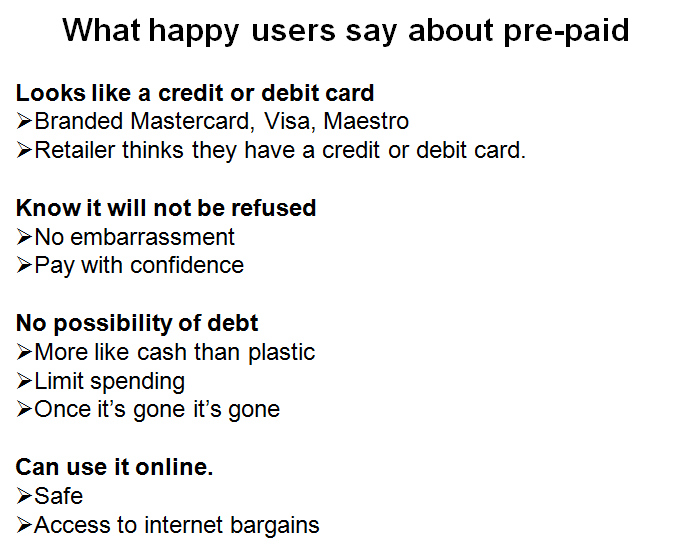
First, they look – and are even branded – like a credit or debit card – MaterCard, Maestro, Visa. Even the merchant fees are the same. So the retailer or hotel or car hire firm thinks they have a credit or debit card.
Second, if they have loaded up the card they know it will not be refused. No embarrassment because you’ve run out of credit or money in your bank account.
Third, it removes the possibility of debt. In that sense it is more like cash than plastic. Once it’s gone it’s gone.
Fourth, they can use them online, safely, and get access to those bargains that are only available over the internet.
Now these are all positive things. But there is a high price to pay for it. Some people think it’s worth it. Others simply don’t realise.
And the finance industry is already filling the unplasticked space with prepaid cards. And with more enthusiasm than it ever filled the unbanked space with basic bank accounts!
And with fees to take out the card, fees to load the card, fees to use the card, and fees to stop the card – among others – that’s no surprise.
If community finance is to offer people with low incomes and poor credit histories access to financial services it has to do more than savings and loans. It has to do plastic as well. But you better be quick. Because the space is rapidly filling up.
